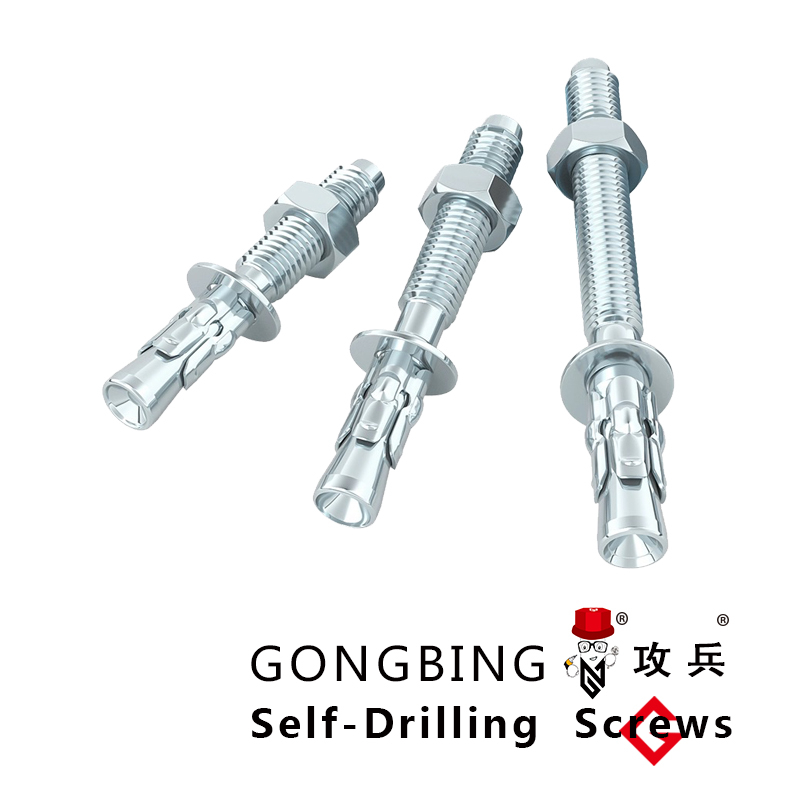expansion anchor for steel
Understanding Expansion Anchors for Steel Applications
Expansion anchors are essential components in construction and engineering that provide secure attachment points for a variety of applications. Specifically designed to work with concrete and masonry, expansion anchors play a critical role in ensuring that structures are stable and can withstand various forces. This article will explore the importance, types, installation methods, and considerations when using expansion anchors for steel applications.
What Are Expansion Anchors?
Expansion anchors are mechanical fasteners that create a strong bond between a structural element (like steel) and a base material (such as concrete). They consist of a threaded bolt, a sleeve or a cone, and a nut. When the bolt is tightened, the sleeve expands against the walls of the drilled hole in the concrete. This expansion creates friction that holds the anchor securely in place.
Importance of Expansion Anchors
In steel construction, expansion anchors are crucial for securing elements like beams, brackets, and machinery to a concrete foundation. They provide several benefits
1. Load-Bearing Capacity Expansion anchors are designed to hold significant loads, making them ideal for structures such as buildings, bridges, and industrial facilities.
2. Versatility These anchors can be used in various applications, including securing steel beams, attaching safety barriers, and mounting machinery.
3. Resistance to Vibration Expansion anchors are effective in environments where vibration and dynamic loads are present, providing added stability and safety.
4. Easy Installation The installation of expansion anchors can often be completed with standard tools, allowing for efficient construction and repairs.
Types of Expansion Anchors
Several types of expansion anchors are available, each designed for specific applications and load requirements
1. Wedge Anchors These anchors consist of a wedge-shaped piece that expands against the wall of the hole when the bolt is tightened. They are durable and suitable for heavy loads.
expansion anchor for steel

2. Sleeve Anchors These anchors utilize a sleeve that expands as the bolt is tightened. They are versatile and can be used in solid concrete, brick, or block.
3. Drop-in Anchors These anchors are installed into a pre-drilled hole and are set with a setting tool that expands the anchor within the hole. They provide a flush surface, making them ideal for aesthetic applications.
4. Heavy-Duty Cast-in Place Anchors These anchors are embedded in the concrete during the pouring process and provide maximum load capacity for critical applications.
Installation Methods
Proper installation is key to maximizing the effectiveness of expansion anchors. The installation process generally involves the following steps
1. Select the Right Anchor Choose an anchor type based on the load requirements and the nature of the base material.
2. Drill a Hole Use a hammer drill to create a hole of the appropriate diameter and depth according to the anchor specifications.
3. Clean the Hole Remove any dust and debris from the drilled hole to ensure proper seating of the anchor.
4. Insert the Anchor Place the anchor into the hole, ensuring it is positioned correctly.
5. Tighten the Bolt Use a wrench to tighten the bolt. This action will cause the anchor to expand and secure it in place.
6. Check Load Capacity Once installed, it's essential to verify that the anchor can safely support the intended load.
Conclusion
Expansion anchors are vital components in the construction and engineering of steel structures. Their ability to securely attach steel elements to concrete and withstand substantial loads makes them indispensable in various applications. By understanding the types of expansion anchors, their benefits, and proper installation methods, engineers and builders can ensure the safety and integrity of their projects. Ensuring that the right anchor is selected and installed correctly not only enhances structural performance but also guarantees the longevity of the construction work.
-
Weatherproof Plastic Expansion Anchors for OutdoorAkụkọJun.06,2025
-
Sustainability in the Supply Chain: Eco-Friendly TEK Screws ProductionAkụkọJun.06,2025
-
Load-Bearing Capacity of External Insulation FixingsAkụkọJun.06,2025
-
Double Head Bolts: Enhancing Efficiency in Industrial MachineryAkụkọJun.06,2025
-
Corrosion Resistance in Chipboard Screws: Coatings for Wholesale DurabilityAkụkọJun.06,2025
-
Butterfly Toggle Bolts : Enhancing Structural ResilienceAkụkọJun.06,2025
